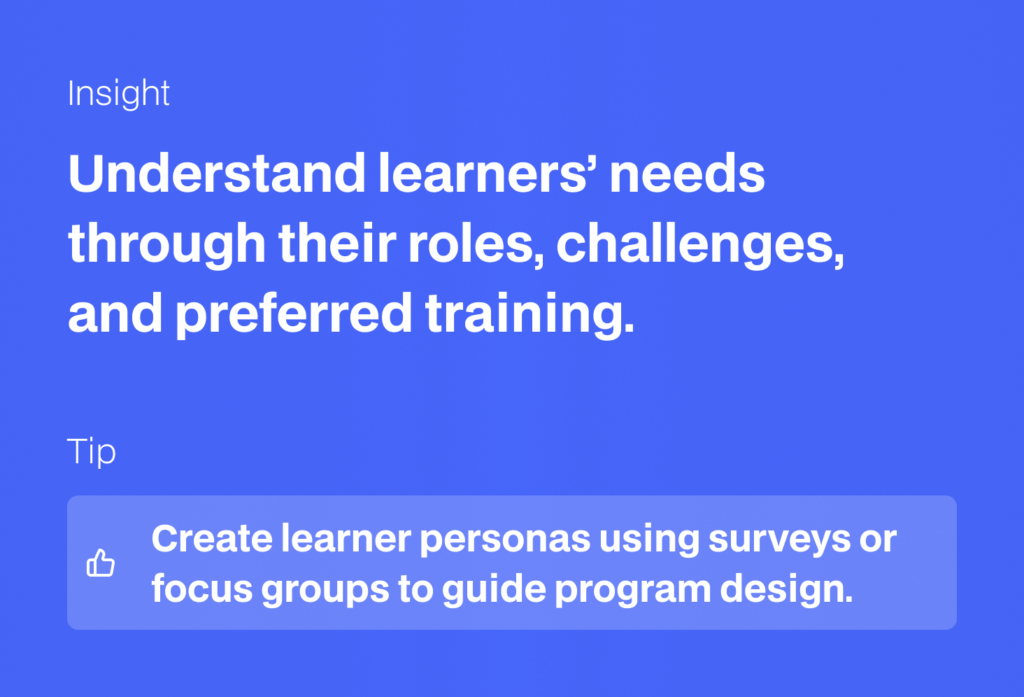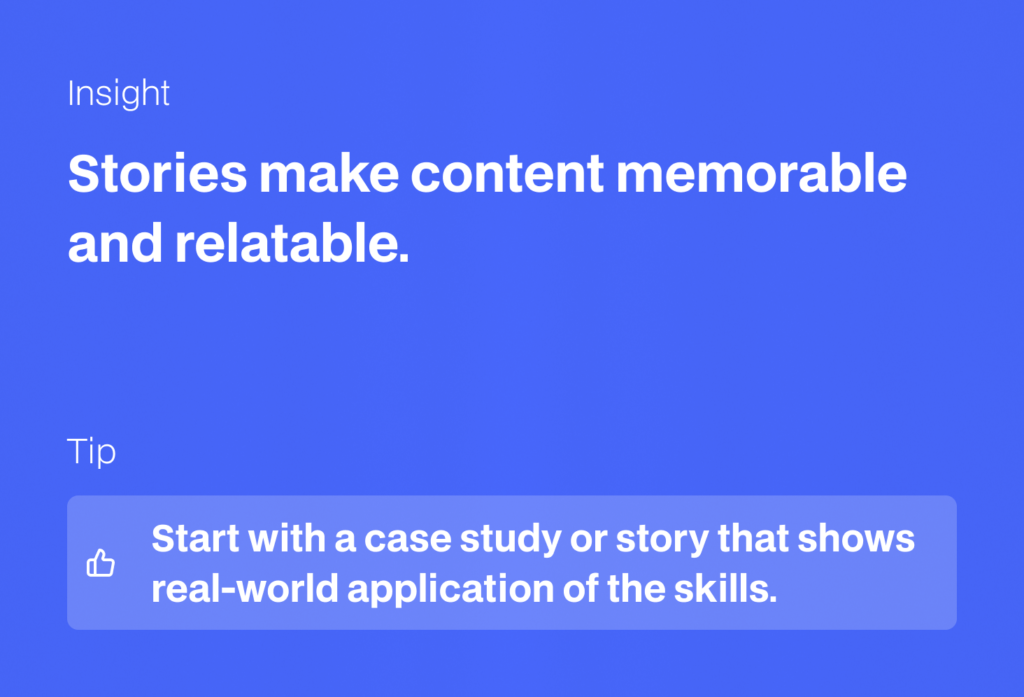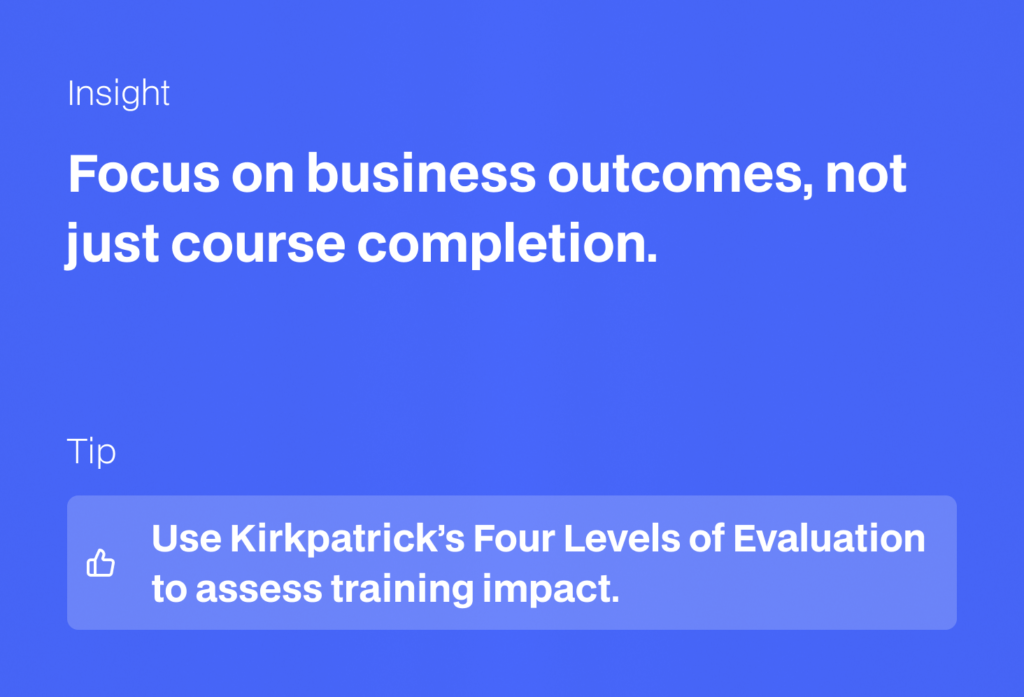The fields of Marketing Strategies for L&D might seem unrelated at first glance, but they share a vital similarity: both are employed to gain attention as well as to encourage a planned course of action. As Marketing is about managing consumer behavior, L&D is about change and development in learners. Here are five tips that you can learn from Marketing for L&D alongside practical suggestions on how to implement them.
1. Understand Your Learner Persona in Depth
They spend time studying their target audiences – trends, issues and what triggers them. This knowledge enables them to develop messages that are closer to a person’s heart.
L&D Insight: Never assume that the learners need this or that. Maybe you can take a survey focus group or even have informal conversations to determine what it is they want. Employ these observations to develop educational resources that help learners get a sense that the content they study is selected specifically for them.
Tip to Try: Learner personas are similar to customer personas used in marketing. Some of the information you should give includes roles, objectives, setbacks, and preferred types of training. These personas should act as your guide when developing your programs.

2. Use the Power of Storytelling
Storytelling is one of marketing’s most powerful tools. A compelling story can build emotional connections, make information memorable, and inspire action. It’s why some ad campaigns stick with us for years.
L&D Insight: Use storytelling in your training for learners to get to know how the concepts fit into the real-life setup through stories that help them relate and engage better with the content.
Tip to Try: Start your training sessions with a relatable story or case study. For example, describe how an employee used the skills being taught to solve a real-world problem. This creates an emotional connection and sets the stage for learning.

3. Simplify and Streamline Design
Good design is a cornerstone of effective Learning and Development marketing. Marketers focus on clean layouts, bold visuals, and clear calls to action (CTAs) to ensure their messages are understood quickly and easily.
L&D Insight: Visual design impacts how well learners absorb and retain information. A cluttered slide deck or overly complicated course can distract and overwhelm learners.
Tip to Try: Apply visual design principles like contrast, visual hierarchy, and white space in your materials. Keep slides or pages focused on one main idea. Tools like Canva or Figma can help create polished designs that enhance learning.

4. Build Excitement Around Learning
Marketers know how to create buzz. Whether through teaser campaigns or exciting launches, they make their audience eager to engage. This energy drives participation and interest.
L&D Insight: Generate excitement for your training programs. If learners see training as just another task, they’re less likely to engage. By framing it as something valuable and exciting, you’ll capture their attention.
Tip to Try: Promote your training sessions with internal L&D marketing campaigns. Share sneak previews, testimonials, or a countdown to the launch. Gamification—like awarding points or badges for early sign-ups—can also increase interest.

5. Measure What Matters
Metrics are a marketer’s lifeline. By tracking performance indicators like click-through rates or conversions, they assess success and refine their strategies.
L&D Insight: Go beyond tracking course completion rates. Focus on how your programs contribute to business outcomes and employee performance.
Tip to Try: Use Kirkpatrick’s Four Levels of Evaluation to assess the impact of your training. Combine qualitative feedback with performance data to get a well-rounded view. Share these insights with stakeholders to demonstrate the value of your efforts.

Wrapping Up
Marketing in L&D mindset takes learning practices to the next level as it makes the learning experience more effective and appealing. Knowing your audience, the use of storytelling, the concept of design, building up anticipation, and evaluating the results are not just marketing techniques – they are tools for learning.
You may consider using one or two of these approaches in your next training endeavor. What you will probably observe is that students can relate to the materials and performance is enhanced. Fundamentally, learning is about change and these approaches may make the change inspiration possible.